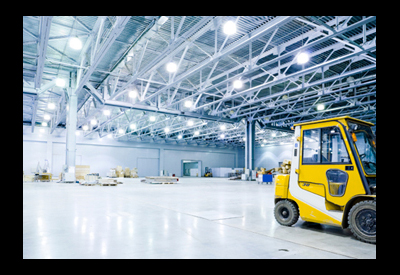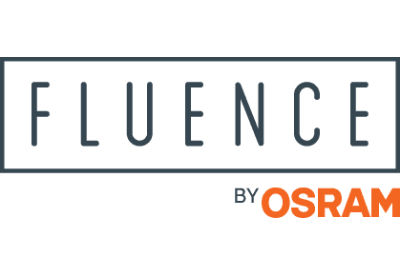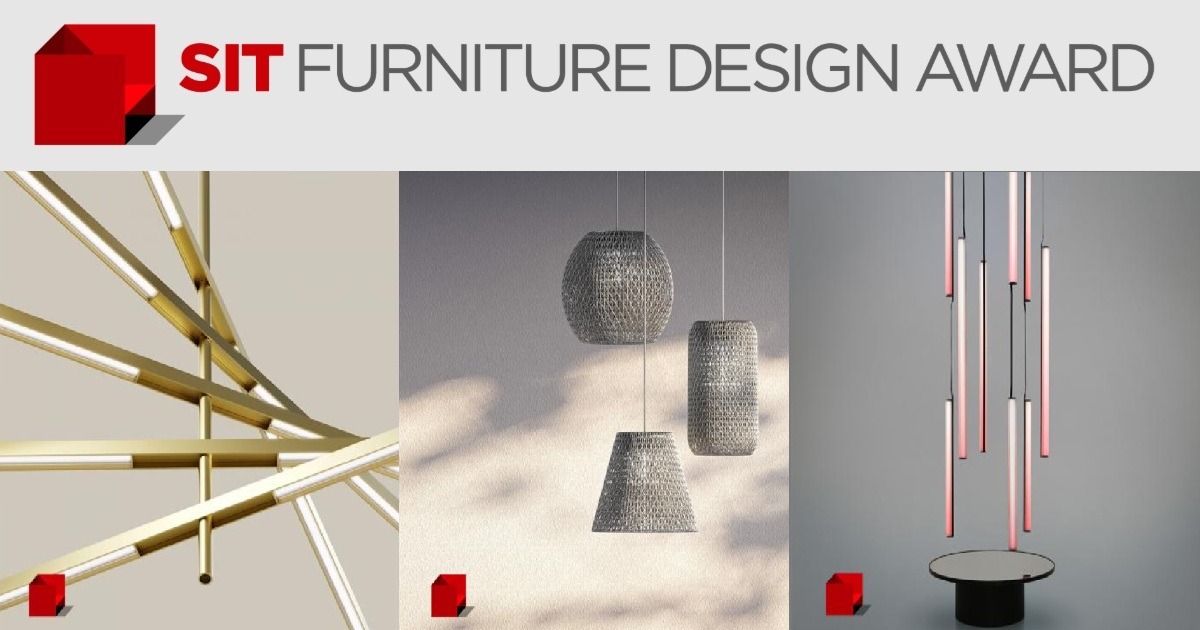14 Strategies to Save Up to 70% in Energy Costs Using the Latest in Warehouse Lighting… and More (Part 2)
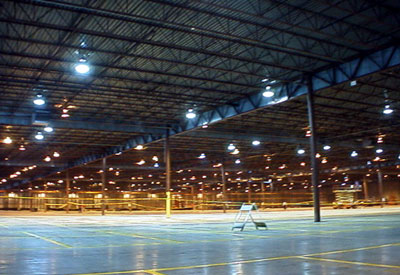
This two-part article describes 14 distinct control strategies enabled by today’s most advanced lighting control systems, and discusses the technology attributes that are required in order to take advantage of these strategies. Part
1, published in the July issue of LDS, explored seven common and advances types of control. Seven additional strategies are presented here.
There is no place for poor lighting in warehouses or distribution centres. These facilities support a variety of important tasks from picking and packaging to shipping and receiving, light assembly and even office work. Now there is a way to benefit from technology advances to ensure the most effective lighting while also providing immense energy savings. This second article in a two-part series continues a discussion of control strategies enabled by today’s most advanced lighting control systems, as well as the technology attributes that are required in order to take advantage of these strategies.
Advanced lighting control strategies
These strategies are not commonly used, but are becoming more widely available.
8. Energy management. This strategy typically refers to a software system that enables a building or facilities manager to visualize, report on and adjust their energy usage. It is often said that you cannot manage what you cannot measure – and centralized energy management software tools provide the capability to do both, in order to test and measure the success of lighting control.
Energy management saves energy over time by providing ongoing improvements to all of the other control strategies. As an example, analysis of building energy usage compared with occupancy data over a month might point out that the office’s kitchen area sees occupants throughout the day but only for short periods of time. The system could recommend reducing the occupancy-based off-delay in this area from 15 minutes to 5 minutes, and would measure the additional savings of that action. This type of ongoing recommendation and improvement is also known as Continuous Commissioning.
Lighting-related control strategies: these strategies begin to extend beyond the standard goal of reducing lighting energy usage, and provide other lighting benefits.
9. Automated maintenance. By monitoring and measuring energy usage at individual fixtures, some control systems can provide the capability to know when a lamp is out, or a sensor or ballast is malfunctioning. Likewise, similar information can be used to make an educated guess about when maintenance will be required. Finally, some systems can manually or automatically reconfigure in the case of a failure – for example, if an occupancy sensor fails, the lights can be re-associated with a neighboring sensor until maintenance replaces it. Together, all of this information can be used in an energy management system to improve the scheduling of maintenance calls, reducing the frequency (and cost) of lighting maintenance.
10. BMS Integration. Some advanced lighting control systems enable integration with a facility’s Building Management System (BMS), typically via BACnet or another open protocol. Through this integration, the user interface of the BMS can provide integrated control and management functions. Although this strategy doesn’t save additional energy in itself, it does offer reduced management overhead (and the associated lower cost) for buildings that want to manage HVAC, lighting and other functions from a single console.
Beyond lighting
These strategies extend a single control system beyond lighting, to control (and reduce) other common energy loads.
11. Plug load control. Plug loads are an area of energy usage that is rarely controlled but represents a significant amount of energy waste. Under this strategy, devices that would be plugged into a standard plug strip or outlet (such as monitors or desktop lamps) are instead plugged into a specialized “plug load controller”. These loads can then be managed according to a schedule or associated with an occupancy sensor. For example, a plug load controller can be set to automatically turn off a desk lamp at the end of the day and whenever the user leaves his desk. This reduces both wasted usage and the “vampire power” that some devices draw even when off. Generally, wireless plug load controllers that are part of a centralized solution offer more sophisticated control options than standalone controllers.
12. Temperature, humidity, CO2, and other environmental monitoring. One of the advantages of a centralized control system (especially wireless and standards-based systems) is the ability to add applications onto an existing network without the need to build out a new dedicated infrastructure. Several emerging applications take advantage of environmental monitoring sensors, to report on conditions in a facility and trigger alerts if those conditions exceed a threshold. For example, some data centers closely track temperature and humidity to avoid unplanned outages. In a lighting control solution that supports this application, temperature and humidity sensors can be added to the network and report real-time data.
13. Wireless thermostats. Building management systems typically manage the thermostats and other HVAC devices within the building. As those devices have begun to roll out with wireless communications capabilities, though, buildings have balked at the requirement to build a dedicated wireless network just for thermostats. A wireless lighting control network can be used to avoid this requirement, routing wireless control messages to and from the thermostats via the lights. The benefit is a single building control network, eliminating the cost of building separate parallel networks. Lighting serves as an especially robust “base application” for this network, due to the large number of lighting nodes (e.g. fixtures), and their even, distributed coverage throughout the building.
14. Other independent building systems. As with the environmental sensors above, some standards-based control systems have the capability to add control over a variety of other devices. Some examples include automated window blinds, industrial fans, and security systems. By providing centralized control over these devices, in addition to lighting, these advanced building networks can provide greater control from a single integrated solution and interface.
How to take advantage of the most advanced control strategies
As detailed at the start of this paper, not every control system enables all of the above strategies. While most systems offer a subset, many are constrained due to their choice of technology, making some of the most valuable strategies impossible to implement. For example, a lighting control system that isn’t networked will not be able to provide a centralized control interface – it is a basic limitation of the technology architecture.
In order to get the most out of a potential control system purchase, and enable all of the above strategies, here are some of the key attributes to look for: Networked: A networked architecture is what separates basic “room-level” control from true control systems. Without some form of networking (wired or wireless), it is impossible to take central control over lighting and therefore impossible to take advantage of energy management, demand response, and many other control capabilities. Non-networked control is also extremely difficult to manage, maintain and upgrade.
Intelligent: Many control solutions tout “intelligence” as a feature – and it is a critical one, but difficult to define precisely. In practice, intelligence in a control system typically means a combination of multiple related attributes:
• flexible configuration, allowing facilities managers and other users to more accurately adapt to conditions and occupant needs. In other words, an intelligent control system usually includes a powerful and feature-rich user interface for setting or changing controls.
• automated control algorithms that make decisions based on multiple inputs. For example, an intelligent control system could combine ambient light readings with time of day, day of week, location, user preference and more to determine (and set) the appropriate light level.
• the ability to measure results, and the means to use that information to improve results.
Simply having access to multiple control strategies does not necessarily make a system intelligent –sophisticated software is required in order to determine how those strategies should interact. It is important to look in-depth at a system’s capabilities, and how it logically makes decisions, in order to determine if it meets your needs.
Wireless
As the number of end points in a building control system has proliferated – lights, various sensors, wall switches, remote controls, computers, plug load devices, and more – so has the complexity of reaching and communicating with each of these devices. In order to effectively control a device, the central system must be able to communicate with it. Wired systems bridge this gap with dedicated control wiring (or specialized power-line control wiring), but the more devices in a system, the more complex and inflexible this becomes. Wireless networking is an effective solution, eliminating limitations of which devices can be controlled, where they can be placed, and so on. This is especially critical in order to realize the most advanced control strategies, and those that extend beyond lighting. Most wired systems, for example, were not designed to connect to plug load controllers or environmental sensors, so there is physically no way to add that capability. Wireless systems can connect to such devices easily, as long as they speak the same language.
Open
As noted above, communications is a requirement of any control system – the system must be able to receive data from devices and issue commands to fixtures. But what “language” is used for these control messages? It can take many forms, though most frequently the communications language is proprietary, and created by the manufacturer of the control system. For example, a control manufacturer could create a sensor, a ballast and a control panel, and write the language they use to communicate with each other. If a customer tried to use another vendor’s sensor with that panel, they would not be able to understand each other and would be unlikely to work together.
Proprietary systems have limited the growth of new and innovative control strategies, because each vendor essentially starts from scratch in developing their own system, and has the added overhead of upkeep on their proprietary communications protocol. This is changing with the introduction of “open” systems to the lighting control market, based on well-accepted industry standards. In an open system, a manufacturer chooses an existing communications language, and their products can communicate directly with other manufacturers’ products.
There are many positive results of open systems — choice, trust, lower cost — but perhaps the most important is their impact on innovation. Unlike proprietary systems, a standards-based control system can use any standards-compliant device. When multiple companies develop products based on the same open industry standard, customers can take advantage of all their combined innovations. This is how lighting control systems have begun to take advantage of energy savings beyond lighting (for example, connecting to environmental sensors or wireless thermostats) and will define the future of how new integrated energy strategies will be developed.
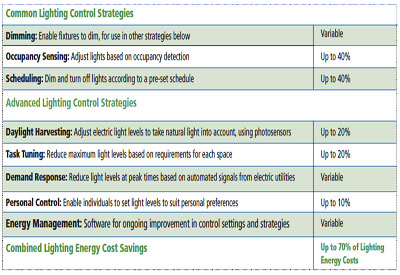
This article was reprinted with permission from Daintree Networks, Inc. The firm provides smart building control and operation solutions, the core application for the Enterprise Internet of Things (E-IoT). Daintree’s ControlScope is an open standards-driven control, monitoring, and optimization solution for facility, operations, energy, and sustainability professionals. Available either as an on-premise or a hosted solution, this solution includes lighting, thermostat, plug load, and general purpose control with data analytics for actionable decision support information. Find out more:
www.daintree.net
Read Part 1 of this 2-part series: http://lighting.electricalindustry.ca/best-practices/1101-14-strategies-to-save-up-to-70-in-energy-costs-using-the-latest-in-warehouse-lighting-and-more-part-1?utm_source=newsletter&utm_medium=email&utm_content=114&utm_campaign=2015-07-23.


